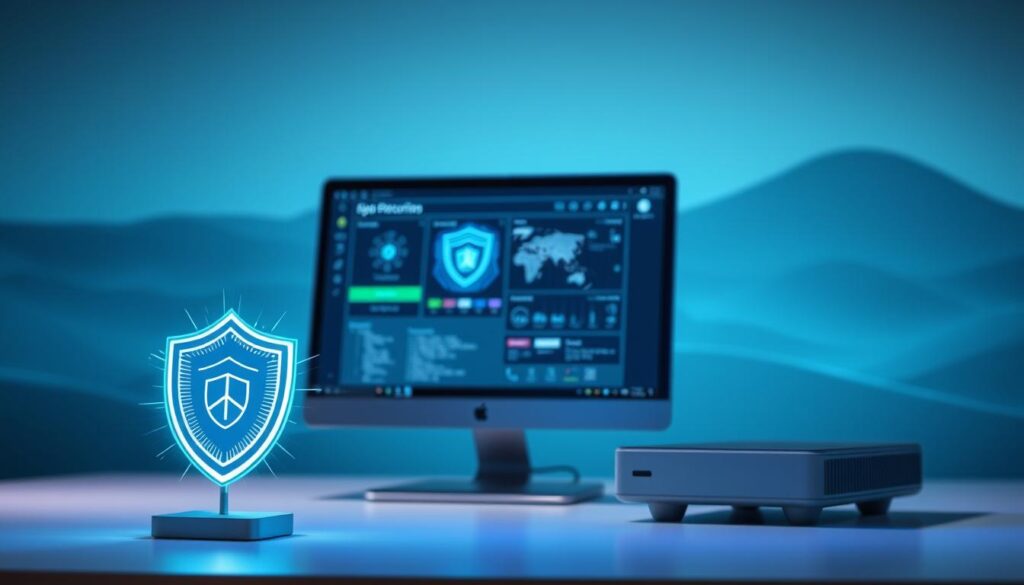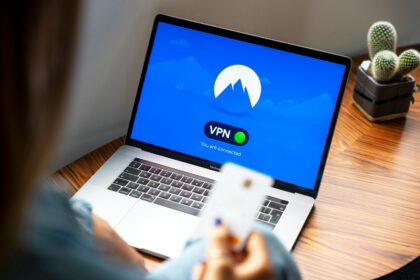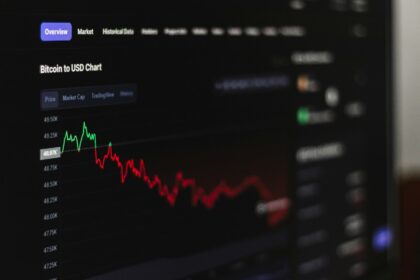In today’s digital world, knowing about cybersecurity is key to keeping your info safe. It’s all about protecting computers, networks, and data from harm. Cybersecurity fights off threats like data breaches and ransomware.
It keeps your information safe, sound, and accessible. This is vital for keeping your systems and data secure and reliable.
Introduction to Cybersecurity
In today’s world, cybersecurity is more important than ever. It’s vital for everyone, from individuals to big companies and governments. Let’s explore why we need strong cybersecurity to fight off cyber threats.
Understanding Cyber Threats
Cyber threats are many and can be very harmful. They include identity theft, data breaches, and phishing. Knowing these threats helps us create better ways to protect ourselves online.
The Importance of Cybersecurity
Cybersecurity keeps our personal and business data safe. It’s key to fighting off new cyber attack methods. Good cybersecurity builds trust in online transactions and keeps our information secure.
Components of Cybersecurity
Understanding the parts of cybersecurity is key to a strong cybersecurity framework. It includes people, processes, and technology. Each part is vital for solid digital protection mechanisms.
People
The human element is the first defense in any organization. Training and awareness programs teach users about data protection. They learn the importance of following security policies.
This creates a culture where everyone helps fight cyber threats.
Processes
Good processes are the heart of a strong cybersecurity framework. Using frameworks like NIST helps organizations tackle cyber threats. They follow steps like identifying threats, protecting data, and responding to attacks.
This ensures a unified effort in managing threats.
Technology
Technical tools are essential for protecting digital assets. Tools like firewalls and antivirus software keep data safe. They protect hardware, cloud storage, and networks from breaches.
These digital protection mechanisms are vital for keeping data secure.
What is Cybersecurity?
Cybersecurity protects computer systems, networks, and data from threats like unauthorized access and malware. It’s vital in today’s digital world to keep personal, corporate, and government info safe.
Effective cybersecurity uses cybersecurity defense strategies to protect. These strategies include ethical hacking, where experts mimic attacks to find weaknesses. Regular updates and security checks are also key to staying safe.
- Regular Updates: Keeping software and systems current helps protect against known threats.
- Security Audits: Audits find and fix security issues in your systems.
Good cybersecurity means understanding digital threats and using smart ways to fight them. As threats change, so must our defenses. Knowing about explanation of cybersecurity and using cybersecurity defense strategies is critical for any business today.
| Cybersecurity Component | Description |
|---|---|
| Ethical Hacking | Simulating attacks to uncover system vulnerabilities. |
| Regular Updates | Ensuring the latest security patches are applied. |
| Security Audits | Evaluating systems to identify and fix security gaps. |
Types of Cybersecurity Threats
It’s key to know about different cybersecurity threats to keep your digital world safe. These threats include harmful software and tricks that fool people. Let’s explore some common threats you might face:
Malware
Malware attacks are common and involve software that harms or takes control of computers. They can be viruses, worms, or trojans. Having strong defenses against ransomware can help fight malware.
Phishing
Phishing scams try to steal your personal info by pretending to be someone else online. Be careful with emails and messages you didn’t ask for. They might be phishing attempts.
Ransomware
Ransomware locks or encrypts your data and asks for money to unlock it. These attacks can hurt both people and businesses. It’s vital to have a solid plan to defend against ransomware.
Social Engineering
Social engineering tricks people into sharing secret info. These tactics use psychology to deceive. It’s important to stay alert and informed to avoid these tricks.
Network Security
In today’s world, strong network security is key to protecting sensitive data. It keeps IT systems safe and running smoothly. Using the right network protection methods is vital to fight cyber threats and keep businesses going.
Firewalls and Intrusion Prevention
Firewalls and intrusion prevention systems (IPS) are critical for firewall security. They watch over network traffic, following set rules to block bad access. This creates a strong defense against cyber attacks, making your network safer.
Network Monitoring
Keeping a close eye on your network with advanced tools is essential. Network surveillance helps spot and fix security issues fast. It checks traffic patterns for signs of trouble. This quick action boosts your network protection plan’s success.
Information Security
Information security is key in today’s digital world. It protects both business and personal data from unauthorized access. This field uses many practices and tools to keep data safe.
The main goal of information security is to keep sensitive information safe. This includes making sure it’s not lost, stolen, or accessed without permission. By using strong security measures, companies can lower the risk of data breaches.
Companies need to have a solid plan for protecting data. This includes using encryption, setting up access controls, and doing regular security checks. These steps help keep all kinds of information safe.
It’s also important to train employees on security. Teaching them about best practices and threats helps keep the company safe. This way, everyone works together to protect information.
“Information security is not an option; it’s a necessity in the digital age.”
Using the latest technology and staying up-to-date with security trends is important. It helps in keeping data safe and secure. Always be ready to adapt and take action to protect your data in the digital world.
Cloud Security
Cloud security is key in today’s digital world. It’s about managing, storing, and protecting data. Knowing the difference between public and private clouds is vital for keeping data safe.
Public vs. Private Cloud
Deciding between public and private clouds depends on security needs. Public clouds, like AWS and Azure, are scalable and cost-effective. But, they need strong security measures like encryption and access controls.
Private clouds give more control over security. They’re tailored to specific needs but can be more expensive and complex. A good strategy is to use both public and private clouds. This way, you get the best of both worlds while keeping data safe.
Shared Responsibility Model
The shared responsibility model divides security duties between cloud providers and users. Providers handle the cloud’s infrastructure, like data centers and hardware. Users are responsible for their data’s security and access controls.
Aligning your security with your cloud provider’s is essential. This ensures your data is well-protected. Understanding and following this model is key to safe cloud storage.
By understanding public and private clouds and the shared responsibility model, you can protect your data in the cloud.
| Cloud Type | Security Considerations |
|---|---|
| Public Cloud | Scalability, cost-efficiency, focus on data protection |
| Private Cloud | Control over security, customizable protections, higher costs |
| Hybrid Cloud | Combines benefits of both, enhances security |
Endpoint Security
Defending all endpoints in your network is key. You need a strong plan. This plan should include traditional antivirus software and modern mobile device management.
Antivirus Software
Antivirus solutions are the foundation of endpoint protection. They find, stop, and remove malware before it harms your system. Today’s antivirus also scans in real-time, analyzes files, and updates automatically to keep you safe.

Mobile Device Management
More people use smartphones and tablets for work. Mobile device management (MDM) is vital for securing these devices. MDM lets you wipe devices remotely, track them, and control apps. This keeps your company’s data safe, even if a device is lost or stolen.
Using antivirus and mobile device management together boosts your cybersecurity. It makes your organization much safer.
Application Security
Ensuring your application is secure is key. This means protecting it from start to finish. With strong security steps, you can lower the risk of attacks.
Developing Secure Applications
Building secure apps is vital. This means following strict coding rules and testing for security often. Keeping up with security updates is also important. These steps help protect your apps and make them safer.
Web Application Firewalls
Web application firewalls (WAFs) are a big help. They act as a shield, blocking bad traffic to your app. This includes attacks like SQL injection and XSS. A WAF adds a strong layer of defense, keeping your apps safe.
| Security Measure | Benefit |
|---|---|
| Secure Coding Standards | Helps eliminate common vulnerabilities |
| Regular Security Testing | Identifies and mitigates possible security risks |
| Web Application Firewall | Provides extra app protection by blocking harmful traffic |
AI and Cybersecurity
Digital threats keep getting smarter, making artificial intelligence in security key for today’s defenses. AI tools are changing how we protect our digital world. They help make our security stronger and more effective.
Artificial intelligence in security shines with AI-driven threat detection. AI uses machine learning to scan huge amounts of data fast. It spots threats better and quicker than old methods. This quick detection helps stop problems before they start.
AI also checks how things behave to find odd patterns. This is key in spotting unauthorized access or malware. AI’s role in security is vital for fighting off complex cyber-attacks. It can even handle security issues on its own, making responses faster and better.
“The future of cybersecurity lies in AI’s ability to provide advanced threat detection and seamless automated security solutions,” says renowned security expert, Bruce Schneier.
Here’s how AI boosts cybersecurity:
| Key Aspect | Description | Benefit |
|---|---|---|
| Threat Detection | Uses machine learning for quick detection | Finds threats faster and more accurately |
| Behavior Analysis | Looks at patterns to spot oddities | Sees unauthorized activities early |
| Automated Responses | Handles security issues on its own | Makes responses quicker and stronger |
With cyber threats getting more complex, using artificial intelligence in security is now a must. By using AI for threat detection and behavior analysis, you can stay ahead of hackers. This keeps your important data safe.
Best Practices for Cybersecurity
Keeping your information safe is key. By following secure online practices, you can lower your risk of cyber attacks. Here are some top tips for staying safe online.
Regular Updates
It’s important to keep your software and systems updated. Updates fix vulnerabilities that hackers might use. Try to automate updates to stay current with security fixes.
Using Strong Passwords
Make sure each account has a strong, unique password. A good password mixes letters, numbers, and symbols. Don’t use simple words or numbers. Use a password manager to keep your passwords safe.
Multi-Factor Authentication
Multi-factor authentication (MFA) adds extra security. It asks for more than one thing to log in, like a password and a code sent to your phone. This makes it harder for hackers to get in.
| Security Measure | Description | Benefits |
|---|---|---|
| Regular Updates | Keeping software and systems up-to-date | Protects against the latest threats |
| Using Strong Passwords | Creating complex and unique passwords | Prevents unauthorized access |
| Multi-Factor Authentication | Using multiple verification methods | Enhances overall security |
Conclusion
As we wrap up our exploration of cybersecurity, it’s clear that understanding and using cybersecurity measures is more important than ever. We’ve learned about different cyber threats like malware and phishing. We’ve also seen how network, information, and application security protect our digital world.
Technology is changing fast, and so is the need for digital protection. New technologies like AI are helping us fight cyber threats better. To stay safe, it’s essential to keep your systems updated, use strong passwords, and use multi-factor authentication.
To keep your digital world safe, stay alert and informed about new threats. A recent example shows how important this is. A viral video was watched 500,000 times before it was taken down. This led to 120,000 people clicking on harmful links in just one month. This highlights the need to stay informed to protect against advanced cyber attacks.
























